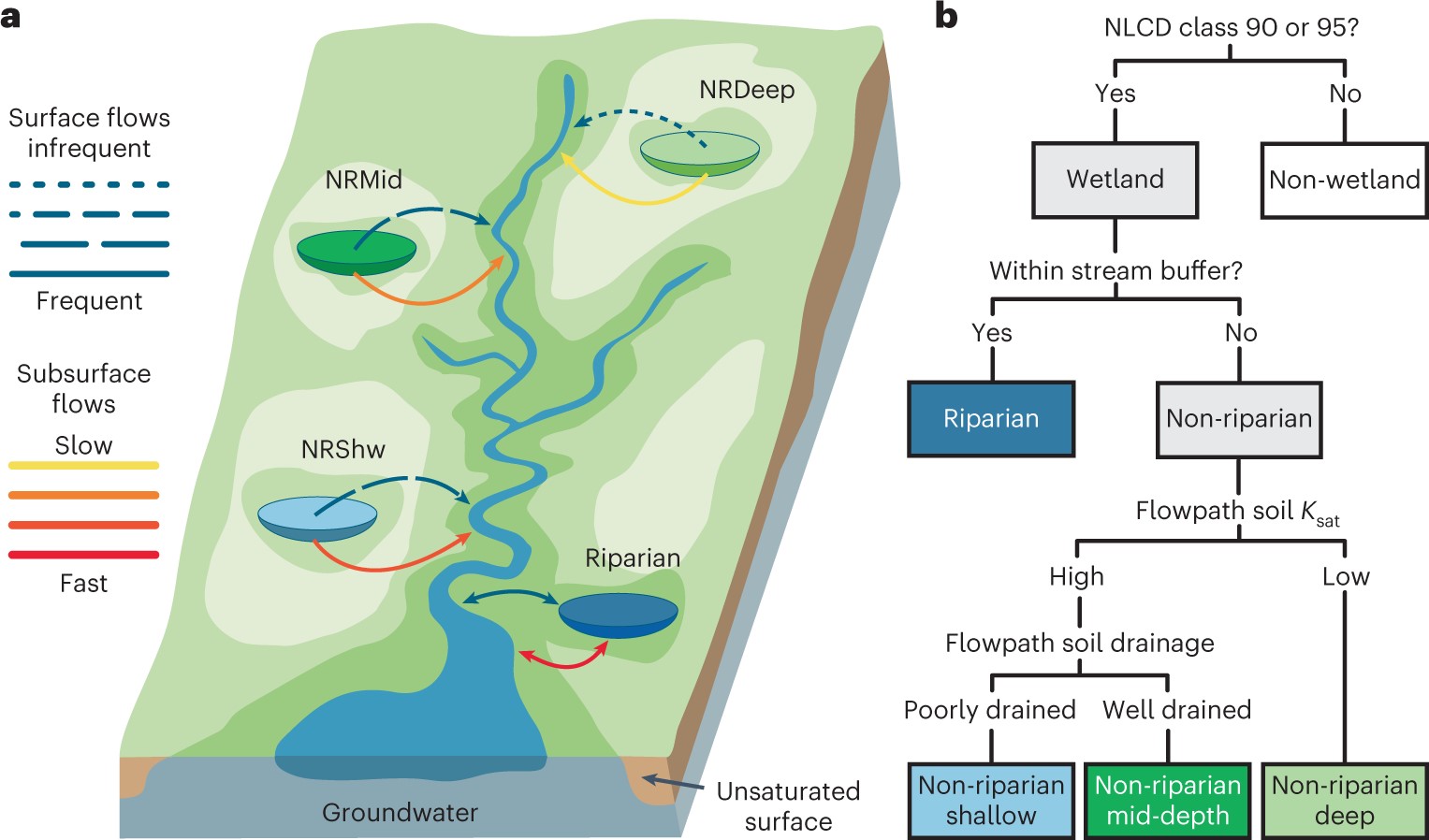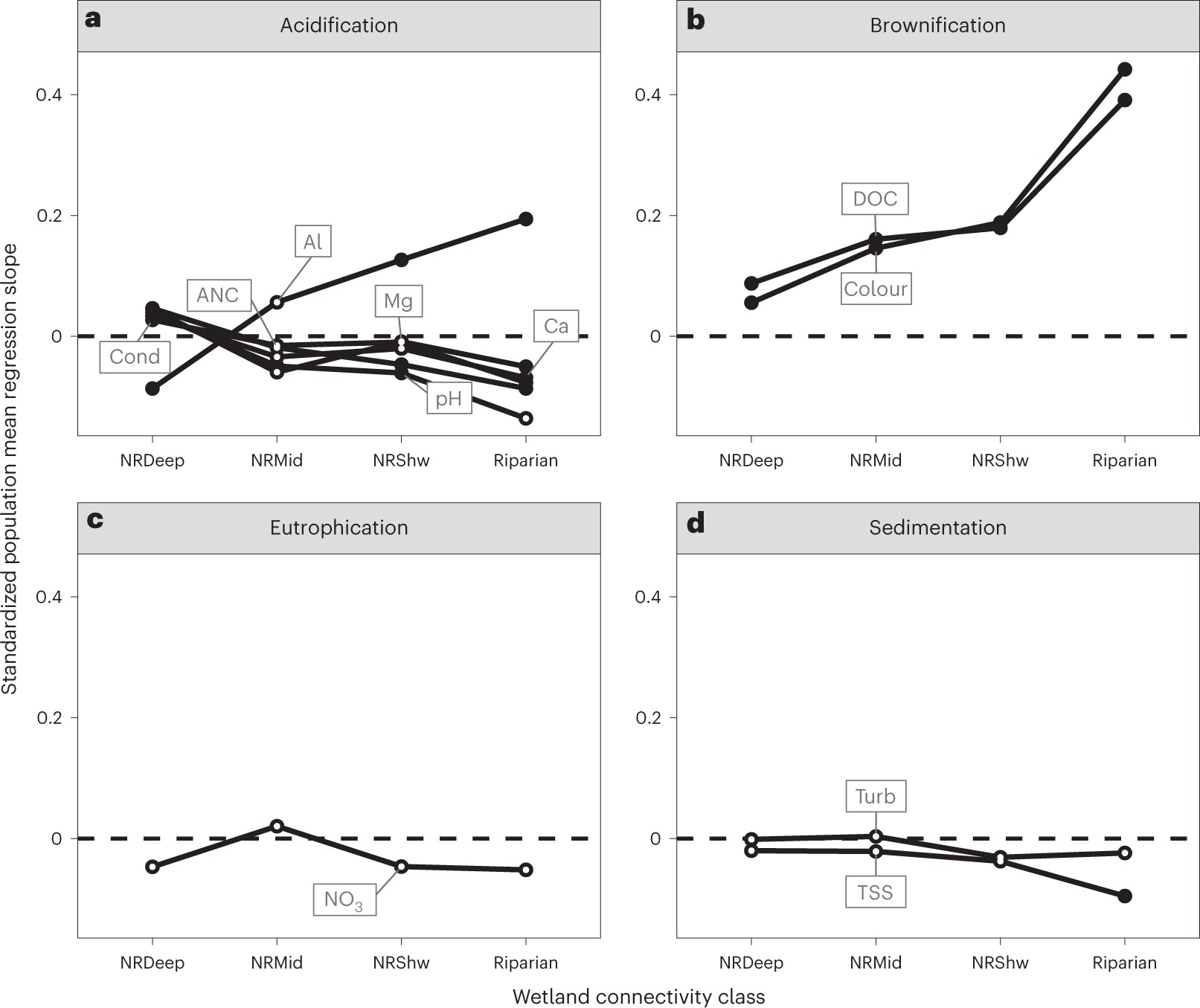文章来源:Scott G. Leibowitz, Ryan A. Hill, Irena F. Creed, Jana E. Compton, Heather E. Golden, Marc H. Weber, Mark C. Rains, Chas E. Jones Jr, E. Henry Lee, Jay R. Christensen, Rebecca A. Bellmore, Charles R. Lane. (2023). National hydrologic connectivity classification links wetlands with stream water quality. Nature Water: 1, 370–380. https://doi.org/10.1038/s44221-023-00057-w
整理人:徐嘉苗,2021级本科生
整理时间:2024年6月4日
Abstract: Wetland hydrologic connections to downstream waters influence stream water quality. However, no systematic approach for characterizing this connectivity exists. Here using physical principles, we categorized conterminous US freshwater wetlands into four hydrologic connectivity classes based on stream contact and flowpath depth to the nearest stream: riparian, non-riparian shallow, non-riparian mid-depth and non-riparian deep. These classes were heterogeneously distributed over the conterminous United States; for example, riparian dominated the south-eastern and Gulf coasts, while non-riparian deep dominated the Upper Midwest and High Plains. Analysis of a national stream dataset indicated acidification and organic matter brownification increased with connectivity. Eutrophication and sedimentation decreased with wetland area but did not respond to connectivity. This classification advances our mechanistic understanding of wetland influences on water quality nationally and could be applied globally.
摘要:湿地与下游水域的水文联系影响溪河流水质。然而,不存在表征这种连通性的系统方法。本研究利用物理原理,根据河流接触和到最近河流的流道深度,将相邻的美国淡水湿地分为四个水文连通性类别:河岸、非河岸浅层、非河岸中深度和非河岸深层。这些类别在美国本土呈现不均匀分布;例如,河岸地带主要分布在东南部和墨西哥湾沿岸,而非河岸地带则主要分布在中西部北部和高原地区。对美国河流数据集的分析表明,酸化和有机物褐化随着连通性的增加而增加。富营养化和沉积随着湿地面积的增加而减少,但对连通性没有反应。这种分类增进了对湿地对美国水质影响的机制的理解,并且可以在全球范围内应用。

图 湿地水文连通性分类

图 全美溪流流域的湿地特征

图 基于线性混合效应模型的四组河流成分与湿地水文连通性之间的关系
原文链接:https://www.nature.com/articles/s44221-023-00057-w
节选转引:https://mp.weixin.qq.com/s/zYiifQlxPLh8Gc8O-VpiaQ